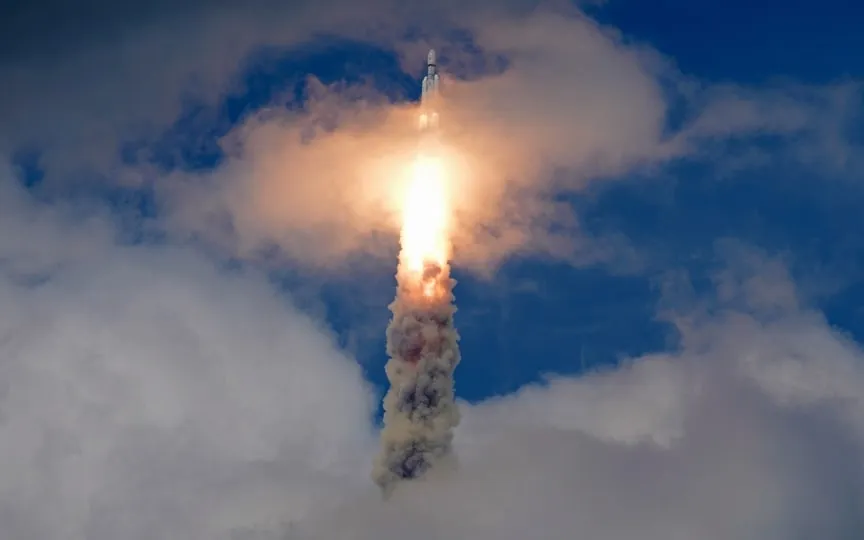ISRO’s Chandrayaan-3 Moon Mission Launches Successfully
India’s third lunar mission, known as Chandrayaan-3, successfully took off today at 2:35 PM IST from the Satish Dhawan Space Centre in Sriharikota. The Indian Space Research Organization (ISRO) launched Chandrayaan-3, carrying the hopes and aspirations of 1.4 billion Indians, on its 384,000-kilometer journey to the Moon, which is expected to take around 42 days. The GSLV Mark 3 launch vehicle, nicknamed ‘Bahubali’, is carrying a payload called SHAPE, which stands for Spectro-polarimetry of Habitable Planet Earth. ISRO has decided to retain the names of the previous moon mission, with the lander being named Vikram and the rover being called Pragyaan.
Ahead of the launch, Prime Minister Narendra Modi tweeted: “July 14, 2023 will always be inscribed in golden letters when it comes to India’s space sector. Chandrayaan-3, our third mission to the Moon, takes off. This landmark mission carries the hopes and dreams of our nation.” The launch was witnessed by ISRO Chairman S Somnath, Dr. Jitendra Singh, Union Science and Technology Minister and other dignitaries. 200 students from different students from the surrounding area.
While other space agencies like NASA have done lunar missions in the past, India’s Chandrayaan program stands out for its affordability. The Chandrayaan-3 mission is expected to cost around Rs. 600 crowns. Shockingly, that is also the budget of the recently released film Adipurush!
Chandrayaan-3 launch: Details
This is not India’s first attempt to map the Moon. Launched in 2008, Chandrayaan-1 was supposed to explore the surface of the moon for two years. ISRO also launched Chandrayaan-2 in 2019, but the rover crashed before it could land safely on the lunar surface.
Highlighting the change in perspective for the third lunar mission, Somnath said, “Instead of planning for success in Chandrayaan-2, we are planning for failure in Chandrayaan-3 – studying what can go wrong and how to deal with it”.
Chandrayaan-3’s first focus is to land safely on the surface so that experiments can be carried out. The lander will touch down with the rover in the south polar region of the Moon. This time, ISRO has expanded the landing area and chosen a site with an area of 4 km x 2.4 km instead of 500 square meters last time. The larger area is supposed to give the Chandrayaan-3 crew more leeway in landing planning.
After landing, the lunar lander collects material from the surface of the Moon for 14 Earth days.
Chandrayaan-3: Technology in the spacecraft
The Chandrayaan-3 spacecraft consists of three main components – a rover, a lander and a propulsion module. It features advanced technologies such as hazard detection and avoidance in the rover, a landing leg mechanism for soft touchdown, and altimeters and speedometers to estimate altitude and speed above the moon.




